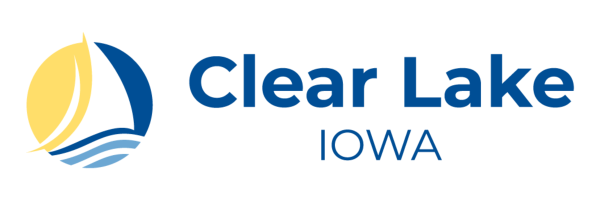This is the second in a series of three articles preceding The Clear Lake Chautauqua Revisited to be held at City Park on Saturday, August 17, 2019 from 10:00 am – 4:00 pm and hosted by the Clear Lake Historical Society and Clear Lake Area Chamber of Commerce.
This week’s focus: A look at Clear Lake Park, the programs and the people that made our Clear Lake Chautauqua a summer destination for so many.
By Beth Ann Schumacher – president of the Clear Lake Historical Society
As we learned in last week’s article, the “Mother Chautauqua” was located on Lake Chautauqua in New York and its idea of providing summer learning was eagerly embraced by many ministers, including Rev. John Hogarth Lozier the presiding elder of the Northwest Iowa Methodist Episcopal Conference, who were anxious to offer the same style of learning provided by the camp meeting/Chautauqua back “west”. In some parts of the U. S. the new Chautauquas called themselves “daughters” and others were identified as independent assemblies. Clear Lake was one such independent assembly and when the Clear Lake Camp Meeting and Assembly Chautauqua was established in 1876 it was the first assembly in the state of Iowa. Independent assemblies owned their own camp meeting grounds or parks generally near lakes and/or wooded areas with space for camping. People came to Clear Lake Park for the camp meetings/Chautauqua to attend lectures, musical events, plays, and non-denominational religious learning opportunities.

Carrie Nation of the Women’s Christian Temperance Union (WCTU) arriving at the Oaks Hotel prior to her
Chautauqua presentation on August 3, 1909.
The Clear Lake Chautauqua provided real educational opportunities with specific weeks dedicated to agriculture, homemaking, music lessons and the like. However, it was the program in the Pavilion that was often the draw for the Chautauqua in Clear Lake as it often was throughout the United States. Talent often included musicians, lecturers, humorists, actors, interpretive readers, magicians, authors, teachers, clergymen, social activists and politicians. Many politicians found that the Chautauqua was a way to get paid for campaigning. One such famous politician to make his mark on the Clear Lake Chautauqua was William Jennings Bryan who spoke to crowds in 1902, 1905 and 1909. Social activist Carrie Nation from the Women’s Christian Temperance Union (WCTU) also spoke in Clear Lake in 1909.

Amanda Berry Smith, former slave and Negro evangelist with the
African-American Methodist Episcopal Church drew
a crowd of over 2,000 to her Chautauqua presentation in Clear Lake in 1896.
Clear Lake Chautauqua participants were treated to musical performances by grand opera star Madame Schumann-Heink and African-American singing groups including Donovan’s Colored Troupe of Tennessee and the famous New Orleans Jubilee Singers. Booker T. Washington and evangelist Billy Sunday also made appearances at the Clear Lake Chautauqua. One of the largest crowds to hear a Clear Lake Chautauqua speaker occurred in 1896 when over 2,000 people crowded into the Clear Lake Park to hear Amanda Berry Smith, former slave and Negro evangelist with the African-American Methodist Episcopal Church.

A view of the Chautauqua Pavilion looking west at the campgrounds in Clear Lake in 1878. The seating capacity of the pavilion was about 1,000, but more were crowed in for exceptional speakers.
(Photo taken by Timothy W. Townsend) ~ (Photo courtesy of the R. Duane and Ruth Umbarger Collection)
Chautauqua attendees could find lodging in one of the several tenting areas available or possibly in one of the nicer cottages owned by a church or family. Some families had lovely two-story homes to stay in for the summer. Rooms were also available at the Prospect House Hotel and eventually the beautiful Oaks Hotel, which will be built on the footprint of the Prospect House in 1893. Meals could be prepared on site, food items from Clear Lake merchants could be purchased along commercial row or meals could be taken at the Prospect House. When not involved in activities, programs or recreation, those attending the Chautauqua could spend time relaxing along the lake shore or at the campground, enjoying the breezes on the Clear Lake Park hills, chatting with new friends and listening to the tunes being played by the many local bands offering music throughout the day and into the evening. Summer in Clear Lake at the Chautauqua was always a cherished time.
Join us next week as we learn of the eventual end of the Clear Lake Chautauqua and explore the program for the upcoming Clear Lake Chautauqua Revisited in detail as it links to the mission of Clear Lake’s original Chautauqua.
